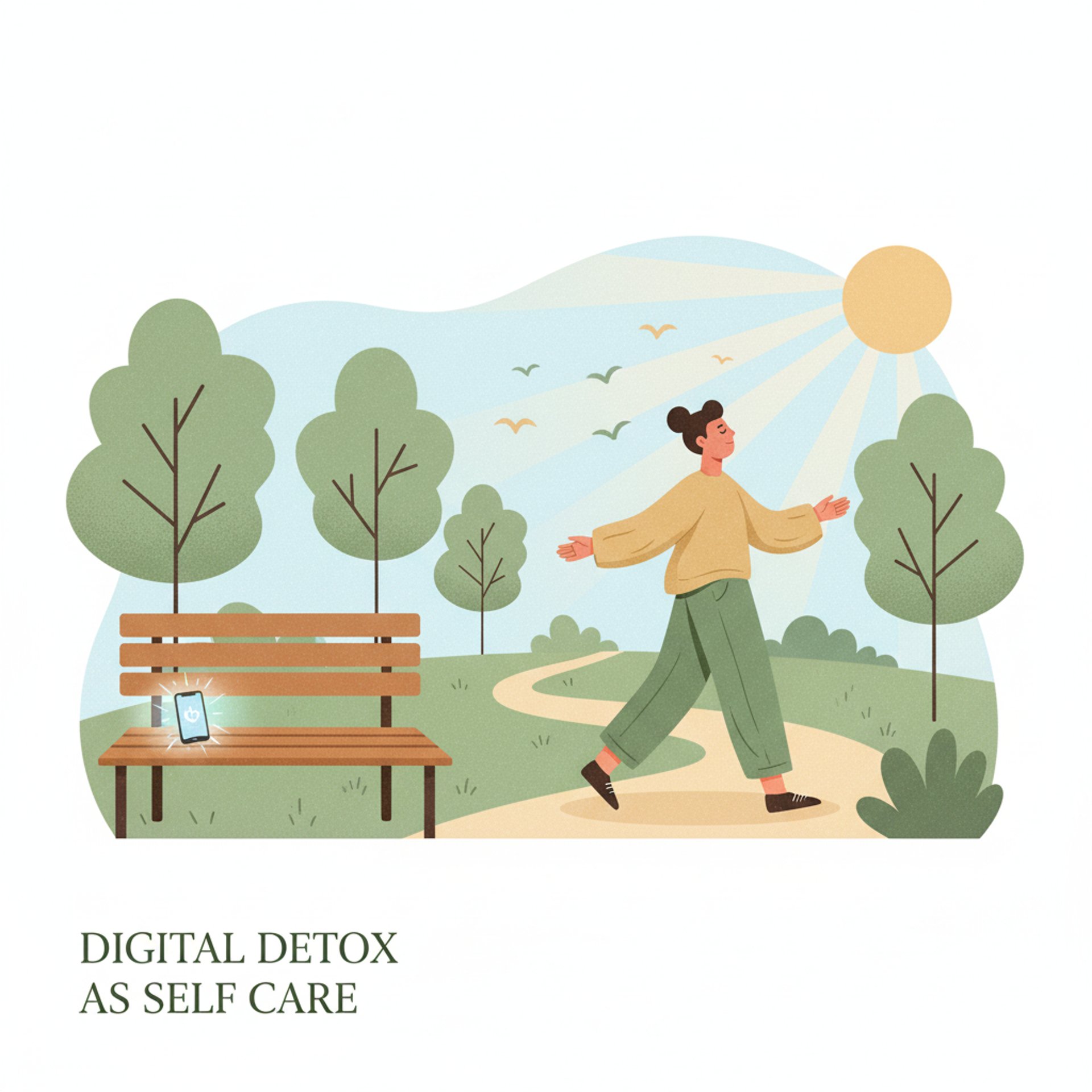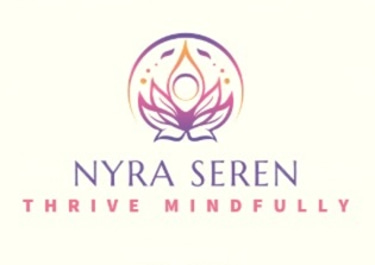
Digital Detox as Self-Care
Reclaiming Your Mind, Body & Spirit
10/3/20254 min read
In the age of smartphones, smartwatches, and constant notifications, the digital world has seeped into every corner of our lives. From the moment we wake up to the moment we rest our heads at night, screens accompany us. Informing, entertaining, and connecting us. And while technology has become a lifeline for work, communication, and creativity, its overuse carries a hidden cost.
Slowly, without realizing it, many of us have surrendered our most precious resource: our attention. What was once spent in contemplation, nature, deep focus, or heartfelt conversation is now scattered across apps, feeds, and endless scrolling.
This is why a digital detox is not just a luxury. It is an act of deep self-care. By consciously reducing screen time, we give ourselves space to breathe, heal, and reconnect with life in its purest form.
The Hidden Cost of Screen Overload
Technology itself is not harmful. It is how we engage with it that makes the difference. Excessive screen exposure can disrupt our natural rhythms and impact both mental and physical health.
Neurological strain: Studies show that constant digital stimulation reshapes our brain’s reward circuits, making us crave quick dopamine hits from likes, notifications, and new content. This reduces our ability to focus deeply.
Stress and anxiety: The endless influx of information overwhelms the nervous system, leading to restlessness and burnout.
Sleep disruption: Blue light from screens suppresses melatonin, disturbing circadian rhythm and reducing the quality of sleep.
Posture and body tension: “Tech neck,” stiff shoulders, and eye strain are physical reminders of our digital dependence.
Emotional disconnection: Over-immersion in the online world often distances us from our inner voice, our relationships, and the natural joys of daily living.
When we recognize these costs, a digital detox no longer feels like deprivation. It becomes an invitation to balance.
Why a Digital Detox is Self-Care
Self-care is often thought of in physical terms. Skincare routines, yoga classes, herbal teas, or spa days. While these nurture the body, true self-care must also nurture the mind and spirit.
Digital detoxing does exactly this:
It calms the nervous system, giving your brain the rest it craves.
It creates silence, which allows intuition and creativity to surface.
It restores presence, helping you savor small, real-world pleasures.
It improves relationships, as you give people your undivided attention.
In a way, detoxing from screens is like decluttering your home. By removing the noise, you make space for peace, clarity, and beauty.
Signs You Need a Detox
We often don’t realize how deeply screens have woven into our habits. Here are subtle signs that it may be time to step back:
You feel anxious when separated from your phone.
You scroll mindlessly, even when not looking for anything.
Your focus span feels shorter than it used to be.
You check your phone first thing in the morning and last thing at night.
Social media comparisons affect your mood or self-worth.
You struggle to sleep, even when tired.
You feel “busy” all the time, yet unfulfilled.
Recognizing these signs is the first step towards reclaiming balance.
Gentle Ways to Begin Your Digital Detox
A detox doesn’t have to mean locking your phone away or disappearing offline completely. Start gently, with kindness and consistency.
Morning ritual of presence
Replace that instinctive scroll with something nourishing: meditation, journaling, gratitude, or even stepping outside for fresh air.Tech-free meals
Keep your dining space sacred. Eating without screens allows mindful eating and better digestion.Mindful notifications
Turn off alerts that are not essential. Decide when you will check your phone, instead of letting the phone decide for you.Daily screen-free window
Carve out at least one hour where you are completely offline—reading, cooking, stretching, or simply sitting in silence.Nature immersion
Replace digital stimulation with sensory experiences. Walking barefoot on grass, watching the sunset, listening to birds, or gardening.Weekly digital sabbath
Choose one day or half-day each week to consciously disconnect. Spend this time with loved ones, in creative expression, or in rest.Sacred bedtime routine
Power down all screens at least one hour before sleep. Use this time for gentle rituals—herbal tea, calming music, journaling, or prayer.
Consistency matters more than perfection. Even small steps create powerful ripple effects.
The Ripple Effect of a Detox
When you step back from the digital noise, something magical happens. Life feels richer.
Mental clarity – Without constant inputs, your thoughts become sharper and more grounded.
Deeper rest – Quality of sleep improves, energy levels rise.
Improved focus – You reclaim the ability to do “deep work” without constant distraction.
Strengthened bonds – Conversations feel more heartfelt when you’re fully present.
Creative flow – Ideas surface more naturally when the mind is free from clutter.
Inner peace – Silence is no longer uncomfortable; it becomes nourishing.
A detox doesn’t just change how you use your phone. It changes how you live your life.
Ancient Wisdom Meets Modern Need
Interestingly, the idea of withdrawing from constant input is not new. Ancient traditions across cultures emphasized periods of silence, retreat, and reflection.
In Ayurveda, dinacharya (daily routine) encourages beginning the day with self-care practices, long before screens existed.
Yogic traditions recommend mauna (periods of silence) to conserve energy and deepen awareness.
Monks and sages throughout history withdrew from “noise” to reconnect with inner wisdom.
In our times, digital clutter has replaced the physical noise of markets or villages. Yet the solution remains the same: Intentional Stillness.
How to Make It Sustainable
The key to a successful digital detox is not rigidity. It’s integration. Instead of viewing it as a one-time cleanse, weave it into your lifestyle.
Start small and build gradually.
Replace screen time with something enjoyable, not with emptiness.
Communicate your boundaries to family and colleagues so they understand.
Track your well-being not in apps, but in a journal. Notice your moods, sleep, creativity, and energy levels improving.
Self-care thrives on sustainability. Your detox must feel like a gift, not a punishment.
Reclaiming Presence
At its heart, a digital detox is not about screens. It’s about presence. Presence with yourself, your loved ones, and the living world around you.
When you put down your phone and look up at the sky, or into the eyes of someone you love, you realize what you’ve been missing. You realize that life’s richest moments are unfiltered, unposted, and unscrolled.
So, next time the urge arises to refresh your feed, pause. Take a deep breath. Ask yourself: Do I need more information, or more stillness?
More often than not, the answer will be stillness. And in that stillness, you’ll find yourself again.
